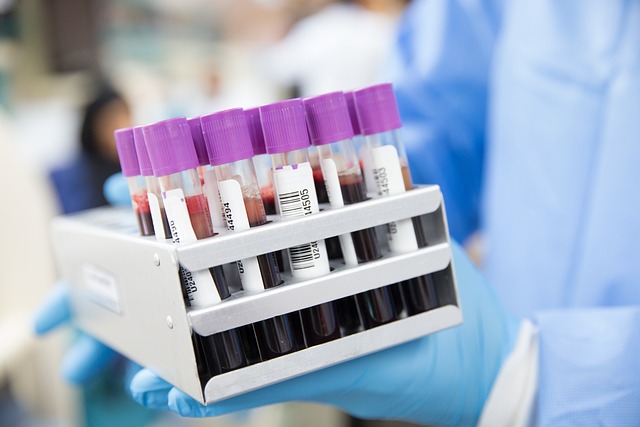Iron Deficiency Anemia (IDA), characterized by low red blood cell count, is diagnosed through regular Well Person Blood Tests UK, which measure hemoglobin and iron-related markers. Early detection is vital for managing symptoms like fatigue, weakness, and shortness of breath through dietary adjustments or medical intervention to restore iron levels. These tests help identify deficiencies, differentiate anemia types, and guide personalized treatment planning.
Iron deficiency anemia is a common yet serious condition, often caused by inadequate iron intake or blood loss. It can lead to fatigue, weakness, and shortness of breath. This article explores how blood tests play a pivotal role in diagnosing this condition, with a specific focus on the Well Person Blood Test UK. We’ll guide you through understanding the test results, helping you recognize the signs and take proactive steps towards managing iron deficiency anemia.
- Understanding Iron Deficiency Anemia: Causes and Symptoms
- The Role of Blood Tests in Diagnosing Iron Deficiency Anemia
- Well Person Blood Test UK: What to Expect and How to Interpret Results
Understanding Iron Deficiency Anemia: Causes and Symptoms
Iron deficiency anemia is a common blood disorder where the body lacks enough healthy red blood cells to carry adequate oxygen to the body’s tissues. This condition arises when there is a decrease in iron, a key component of hemoglobin, the protein in red blood cells that enables them to transport oxygen. Understanding its causes and symptoms is crucial for identifying and addressing the issue, especially through well person blood tests UK.
The primary cause of iron deficiency anemia is blood loss or inadequate iron intake over time. Blood loss can occur due to various factors such as heavy menstrual periods, gastrointestinal bleeding, or chronic illnesses like anemia or stomach ulcers. Inadequate dietary intake, particularly in individuals with a poor diet lacking in iron-rich foods, can also lead to this condition. Common symptoms include fatigue, weakness, pale skin, shortness of breath, dizziness, and headaches. Often, these symptoms develop gradually, making it essential for people to recognize changes in their overall well-being and consult healthcare professionals during regular check-ups, including well person blood tests UK.
The Role of Blood Tests in Diagnosing Iron Deficiency Anemia
Blood tests play a crucial role in diagnosing Iron Deficiency Anemia (IDA) in the UK, where a well person blood test is often the initial step. These tests measure the levels of various components in your blood to identify potential deficiencies or abnormalities. In the case of IDA, healthcare professionals typically look for low levels of haemoglobin, a protein that carries oxygen in red blood cells. A simple Well Person Blood Test UK can reveal if your haemoglobin concentration is below the normal range, suggesting anaemia.
Furthermore, specific iron-related markers are assessed, such as serum ferritin, transferrin saturation, and iron level measurements. These indicators help differentiate between various types of anaemia and determine the underlying cause, which is essential for effective treatment planning. Accurate diagnosis through well-person blood tests in the UK enables timely intervention to alleviate symptoms and prevent potential complications associated with iron deficiency anemia.
Well Person Blood Test UK: What to Expect and How to Interpret Results
When considering a Well Person Blood Test UK, it’s important to understand what to expect and how to interpret results, especially when checking for iron deficiency anemia. This type of test typically involves taking a small sample of your blood, usually from a vein in your arm, similar to a routine medical check-up. The sample is then analyzed by a laboratory to assess various health markers, including those related to red blood cells and iron levels.
Results are usually available within a few days, and healthcare professionals will provide clear explanations. Low hemoglobin (Hb) levels might indicate anemia, while elevated or low ferritin could point to iron deficiency. Normal ranges vary slightly depending on age, gender, and overall health, so understanding these numbers in the context of your individual profile is key. Always consult with a medical professional to discuss any anomalies and get personalized advice.
Iron deficiency anemia is a common yet manageable condition, and the Well Person Blood Test UK plays a pivotal role in its diagnosis. By understanding the symptoms and utilizing blood tests effectively, individuals can promptly address any iron deficiencies. This simple yet powerful tool allows for early intervention, ensuring better overall health and well-being. Remember, timely testing and interpretation of results are key to navigating this health landscape.
